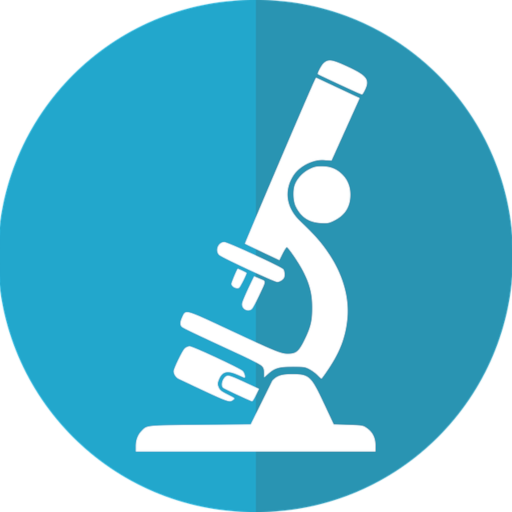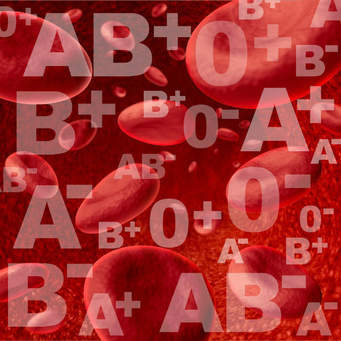Introduction
From the beginning, Blood Bank testing has been based on the observation of cells clumping together in the presence of serum, plasma, or reagents. This clumping is known as agglutination.
The discovery that humans have more than one ABO blood type and that not all ABO blood types compatible with each other was only the first of many. As transfusions became more common, more blood groups made themselves known. Today we have identified more than 43 blood group systems and over 300 antigens. Until the advent of molecular testing, most of these were discovered through the antibody-antigen reactions and agglutination.
Agglutination
So, what is happening when cells agglutinate? All red cells have structures on or within the membrane, called antigens. They are tiny, 3-dimensional formations and often have a function such as transporting substances into or out of the cell. Your immune system “knows” which antigens you have.
In the plasma, there are antibodies produced by your immune system. These can be antibodies to anything you have encountered that is not a part of you, such as bacteria, the flu, and viruses. You can also have antibodies to other blood groups. Some of these are naturally occurring, like those between the 4 major blood groups. Others you can acquire from pregnancy or a transfusion.
When you make an antibody, your immune system remembers that antigen, and when it encounters it again, will destroy it. When you take plasma from a person who has an antibody and mix it with red cells from a person who has the corresponding antigen…the antigen and antibody bind, and you get agglutination.
Antigen Structures
Here you can see different ways antigens are integrated into the red cell membrane. Some are anchored into the membrane while others are woven throughout. Each antigen has a specific 3-dimensional structure.
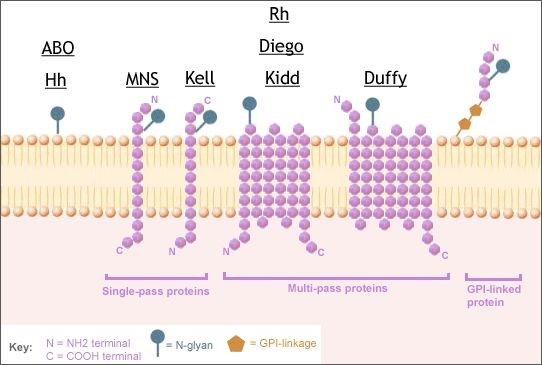
Antibody Structures
What do these antibodies look like? The 2 most common types of antibodies are IgG (immunoglobulin G) and IgM.
IgG has a “Y” shape. The tips of the Y (labeled Fab in the figure) are designed to only bind with their specific antigen.

IgM is called a pentamer, meaning it is made up of five immunoglobulin structures. It is a much larger structure than IgG.

Antigen + Antibody = Agglutination
This diagram shows how it looks when the antigens and antibodies bind to each other.
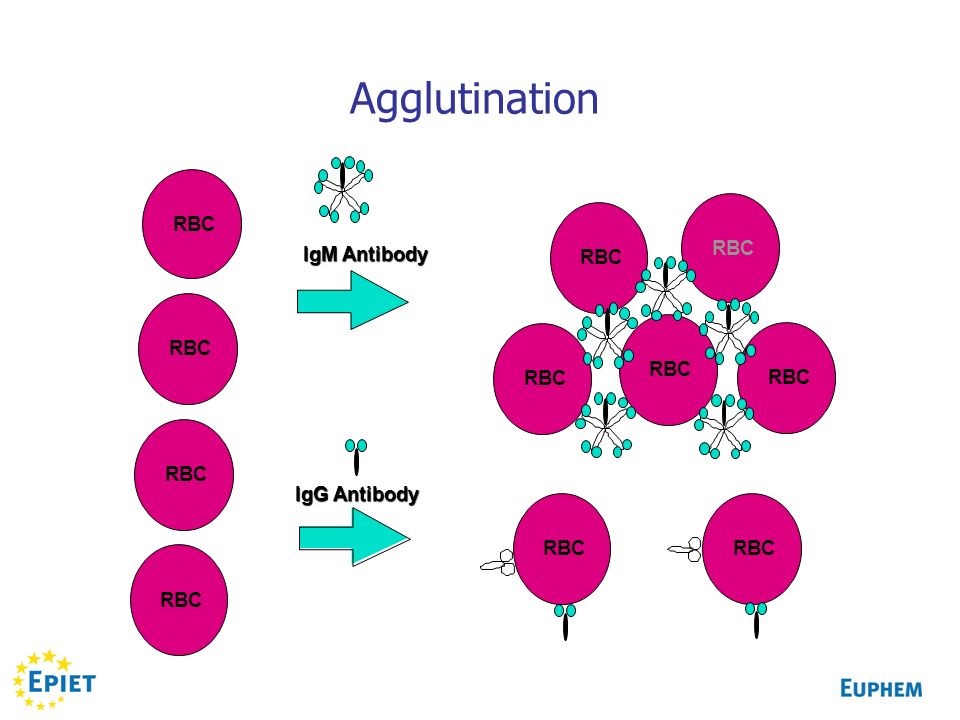
The structure of immunoglobulins is important to understand how the binding occurs. With IgG, sometimes the antigens are too far apart to bind on their own. IgM has a much easier time binding to antigens.
When we look at the discovery of blood groups, the first groups recognized were those that reacted quickly, at room temperature. These were the ABO types, Rh (including D, C, E, etc.), and the M and N groups, among other IgM blood groups. Some IgG antibodies were discovered when samples were incubated at body temperature, 37∘C.
One of the most important advances was made when scientists Carlo Moreschi in 1908 and Robin Coombs in 1945 injected rabbits with human IgG. The rabbits made an antibody known as “anti-human globulin”, or AHG. It was Dr. Coombs who discovered that certain “incomplete” antibodies would react when tested using the AHG method. Essentially, the antibody produced by the rabbits bridges the gap between IgG molecules bound to the antigens on the red cells, allowing them to bind to each other and cause agglutination. (Note: this diagram uses the term “Coomb’s Test”, but Dr. Coombs always recognized Dr. Moreschi’s discovery of AHG and did not want the test to be known as such.)
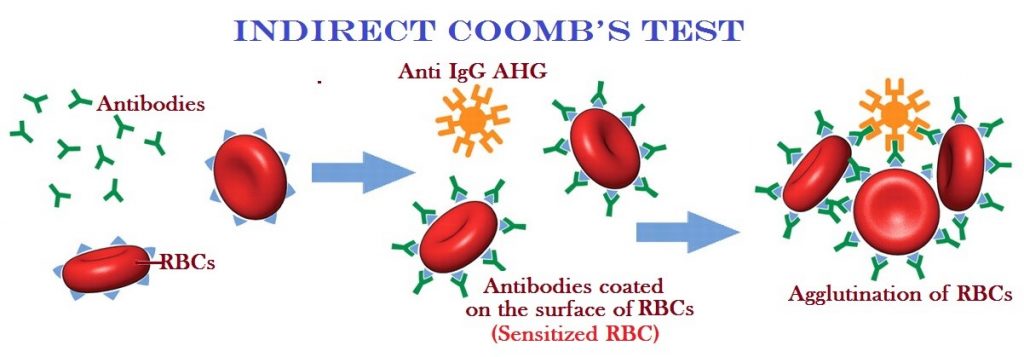
In addition to the type of antibody, there are other factors that can affect how well antigens and antibodies react.
- Number of antigen sites. This is dependent on your genetic makeup. Did you inherit this blood group from your mother, your father, or both? Those who inherit two of the same gene have more antigen sites than those who only inherit one gene. More sites means a better chance of reacting.
- Temperature. When testing is performed, sometimes the sample is tested at different temperatures to see if the reactions are stronger. Some antibodies react best at 37C, some at room temperature, and others at refrigerator temperature.
- Affinity and Avidity. Affinity is how strong the bond is between the antibody and antigen. Is the bond like a sticky note, or super glue? Avidity is how well the antibody fits the antigen. Think of shoes; some fit perfectly while others are looser. If the shoe doesn’t fit well, you can still wear it but it might come off.
- Zeta potential. This term refers to a slight negative charge that surrounds your red cells. Like two magnets, red cells will generally repel each other. By using reagents called “potentiators”, such as albumin and low ionic strength saline (LISS), we can reduce this charge and make it easier for the red cells to get close enough to react.
In Conclusion
Today, 120 years after Landsteiner discovered the ABO system, agglutination is still used to test for antibodies to red cells, and determine if a donor’s blood is compatible with the recipient. It is both one of the simplest tests and the gold standard of Blood Banking.
